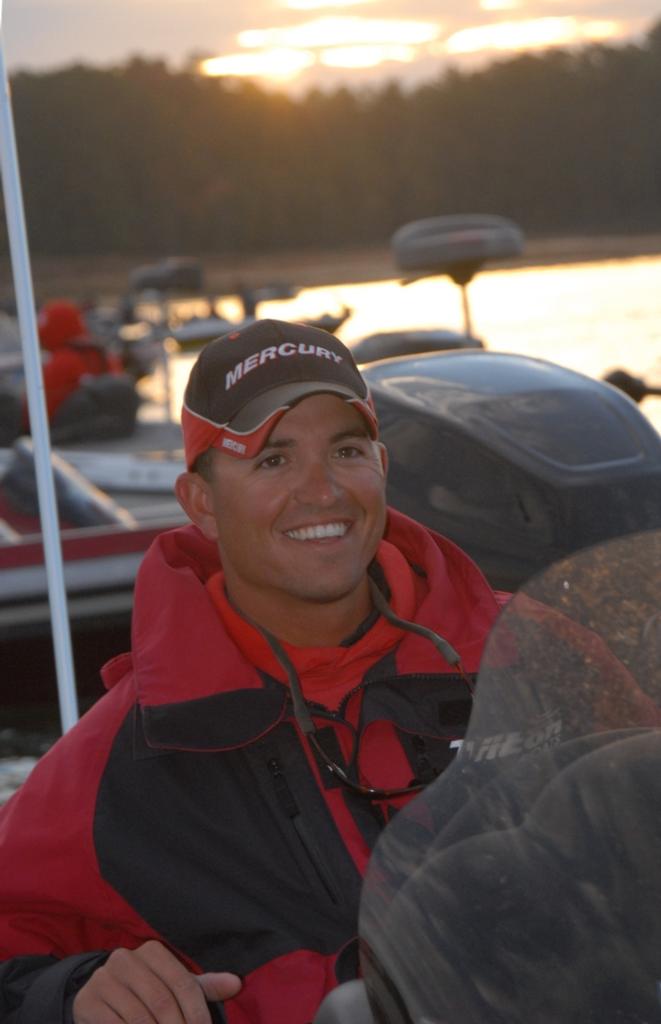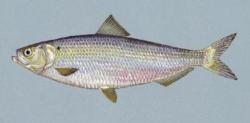Ashley on bluebacks
Local pro offers opinions on blueback herring, largemouth bass relationship

APPLING, Ga. – Over the last several years there has been a lot of talk about blueback herring in Carolina Lakes – mostly about how largemouth bass like to eat them.
When and how the tasty baitfish (to bass) with a shimmering blue back first appeared in the Savannah River chain of lakes has been debated but for sometime, but the fact is largemouth love to eat them – perhaps a little too much.
During the late spring and early summer, blueback herring play a large role in how bass anglers pattern bass.
But during the late summer and fall, it’s a different story.
As day two of Walmart FLW Series on Clarks Hill got underway this morning, there has been very little mentioned about the blue-backed baitfish that anglers rave about so much in the spring.
Bass pro Casey Ashley of nearby Donalds, S.C., (currently in 4th place) has grown up fishing the lakes along the Savannah River Chain, including Hartwell, Russell and Clarks Hill.
And while Ashley admits that bluebacks help bass anglers target bass in the spring, during the fall the nomadic baitfish can lead bass astray, out into open waters where they are very difficult to pinpoint.
“Bluebacks are kind of a double-edged sword,” Ashley opined before takeoff this morning. “During the spring, when the water temperatures reach the 70-degree mark, the herring come into shallow shoals to spawn and bass eat them up like candy, making the bass easy to catch, especially on topwater lures. But once water temperatures get into the 80’s in June and July, the herring begin to move way offshore and school up over super-deep water. And that’s when the herring become a problem: bass love them so much that they migrate with them out into open water and suspend with the bluebacks.”
“During the summer and fall in these Carolina lakes, largemouth bass seem to take on more of a striped bass behavior: following schools of herring around in open water without relating to any kind of cover or structure,” Ashley explained.
This is a marked change in largemouths’ well-known late summer and fall pattern of  following threadfin shad into the backs of creeks where anglers can target them more easily.
following threadfin shad into the backs of creeks where anglers can target them more easily.
“For years, bass on these lakes followed the threadfin shad migration into the backs of creeks where we could target them with shad imitators like crankbaits or spinnerbaits,” Ashley added. “But since bass seem to prefer those bluebacks so much more, it’s like they follow the bluebacks out into the main lake during the summer and stay with them through the fall instead of returning back into the creeks to chase shad.”
Ashley noted that there are still some remnants of bass following shad into the backs of creeks during the fall of the year on Carolina lakes, but it’s not as strong as it used to be.
In fact, this week Ashley has chosen to get far away from the influence of bluebacks and target fish that are still relating to an “old school” shad pattern.
Similar to how the introduction of the goby into the Great Lakes has changed smallmouth bass behavior or putting rainbow trout in California lakes has changed bass West Coast bass feeding habits, the blueback herring is changing how bass pattern in reservoirs in Carolina and Georgia.
“That’s what keeps this sport exciting, though,” Ashley summed up. “Food sources and habitat are always changing in our lakes and our job as professional anglers is figure those changes out and develop techniques and lures to catch those bass. As for bluebacks, I think we have a pretty good handle on how they affect our fish in the spring, but in the summer and fall, I think there is still a lot of discovery to be done.”
The day two weigh-in of the FLW Series BP Eastern on Clarks Hill will begin at Thursday at 3 p.m. at Wildwood Park located at 6212 Holloway Road in Appling.
Thursday’s conditions
Sunrise: 7:41 a.m.
Temperature at takeoff: 52 degrees
Expected high temperature: 65 degrees
Water temperature: 68 degrees
Wind: ENE 10 to 20
Day’s outlook: more clouds and wind